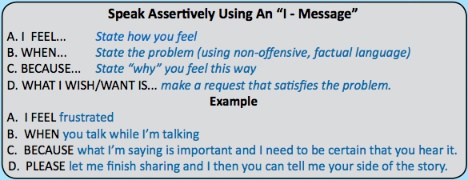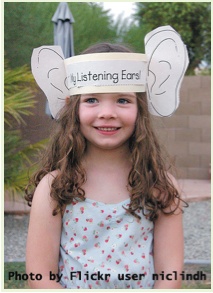This is an exercise about discovering one’s personal power. In any conflict, there are things you can’t control. However, there are always things you CAN control and knowing what they are and how to use them is a fundamental and powerful CR Tool.
Have students prepare a group presentation to teach the 10 things they can control in a conflict. This will help everyone remember them in even a stressful conflict situation.
1. Your Plan for the Future – Knowing what you want in the future helps you look past the current situation and focus beyond temporary problems.
2. Your Perspective – Choose to change how you look at it. Stop and reassess your point of view. Find a learning opportunity in the situation.
3. Your Responses – No matter what the other person is doing, you can choose to control your responses.
4. Your Investment – Spend less time thinking about it, talking about it, and engaging in it.
5. Your Role in the Conflict – Ask yourself, “What have I said or done, or not said or done, that has kept this conflict going?” If it takes two to tango and you’re no longer willing to dance, the conflict has no choice but to diminish.
6. Your Expectations – When your expectations don’t fit the situation, change your expectations. Change, not lower. Is it possible that your expectations are what are causing your frustration and the conflict to continue?
7. Your Energy – Unresolved conflict (and unresolved emotions!) can be a black hole for energy. Look for a different outlet for your attention and put your energy there.
8. Your Own Story – Give an account without elevating or victimizing anyone. Consider an honest but hopeful response such as, “It’s a difficult time right now, but I’m learning a valuable lesson about expectations,” rather than, “Yet again I’m the victim and no one cares.”
9. Your Method for Processing Emotions – Find a constructive way to process what’s happening. Talking with a mentor, family member, friends, clergy, or a therapist can be helpful. Keeping a journal, writing letters you’ll never send, a vigorous workout, or even slinging rocks at the tree in the backyard are all productive ways to process your emotions and perspective about an otherwise unproductive situation.
10. Your Character – No one can make you do anything. When you say, “He just makes me so (fill in the blank) that I had to (fill in whatever terrible response or action you took),” you’re giving the other person control over your moral fiber. Take personal responsibility and don’t give anyone else the power to make you behave in a way that is unbecoming, unethical, or dishonorable. Show your best side and not an unchecked series of poor reactions.





